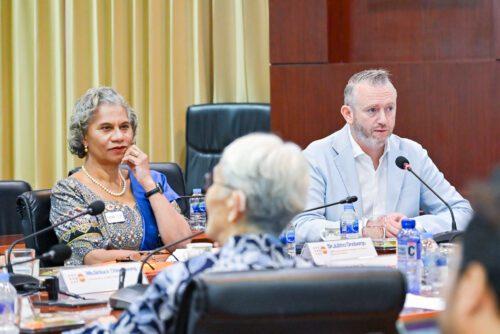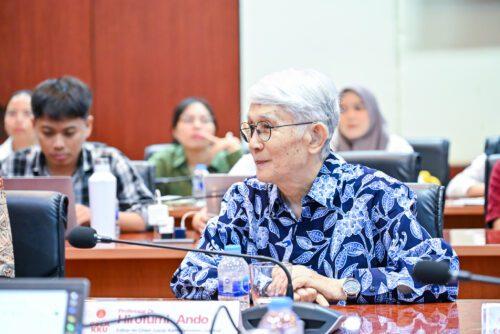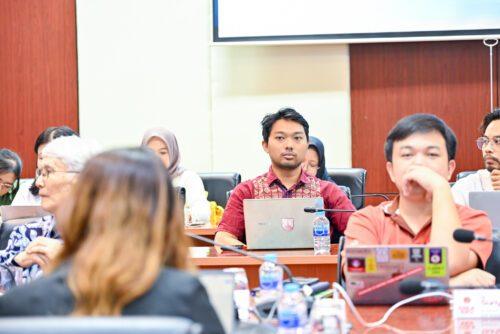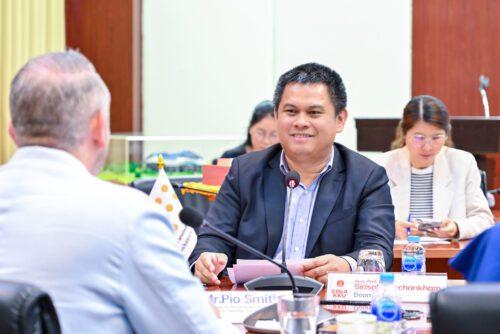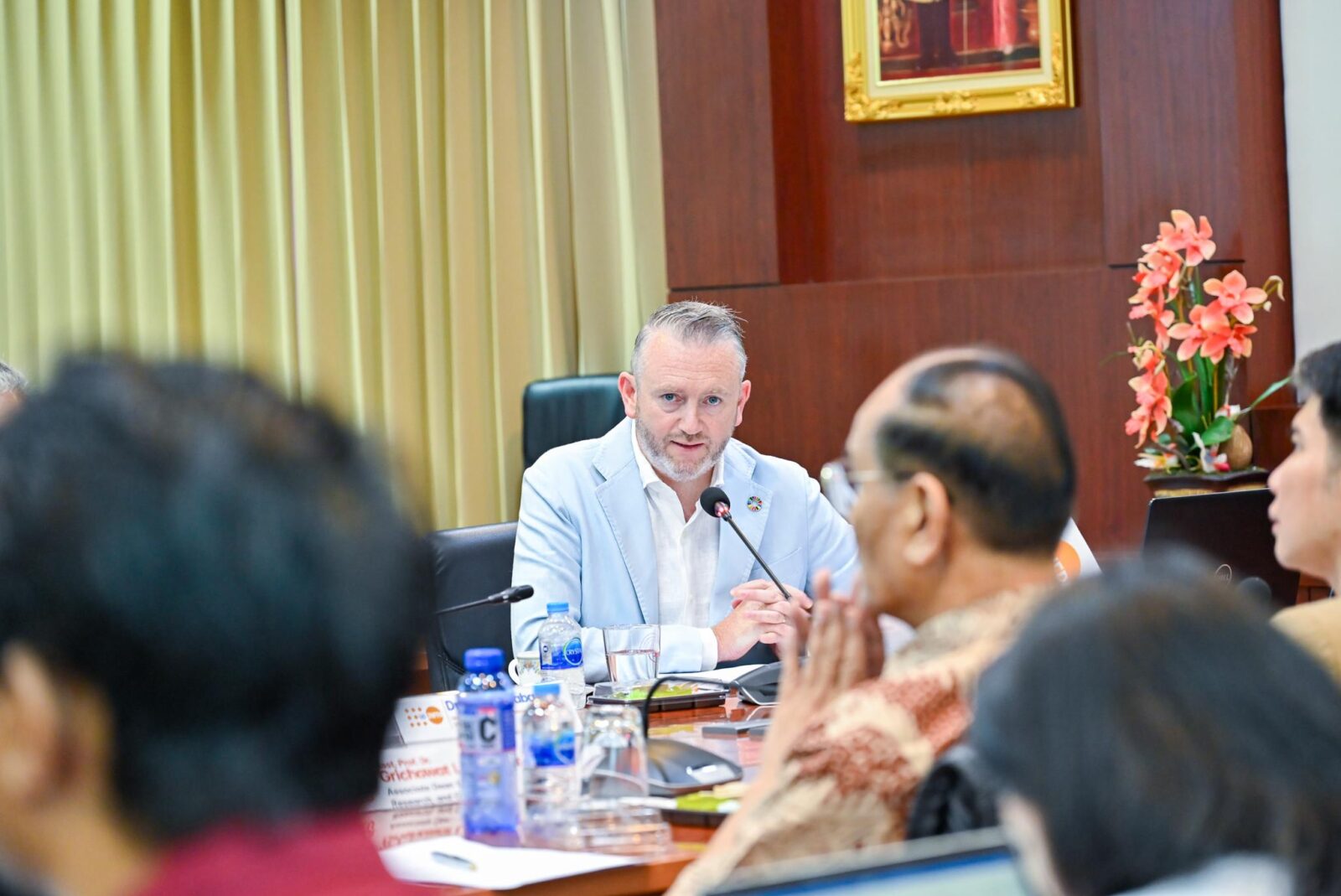August 9, 2024 COLA welcomed a team of The United Nations Population Fund (UNFPA) team from its regional office in Bangkok to a seminar on “Demographic Changes and Population Aging: Sociology-Economic Implications in Asian Countries” in the morning of 9 August. It was headed by Mr. Pio Smith, Director of UNFPA Asian and Pacific Office and included Dr. Julitta Onabanjo, UNFPA Representative for Malaysia and Country Director for Thailand and Ms. Siriluck Cheingwong, Head of Office of UNFPA Thailand. It was attended by Dean Sirisak of COLA who welcomed UNFPA team and several COLA faculty members as well as Thai and international students. It was chaired by Associate Dean Grichawat.
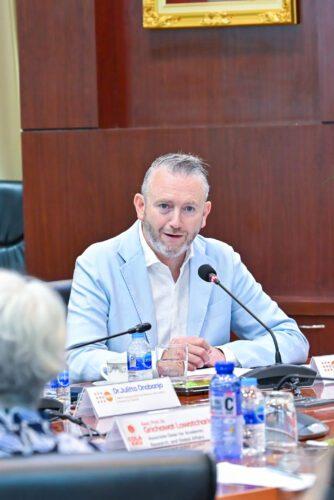
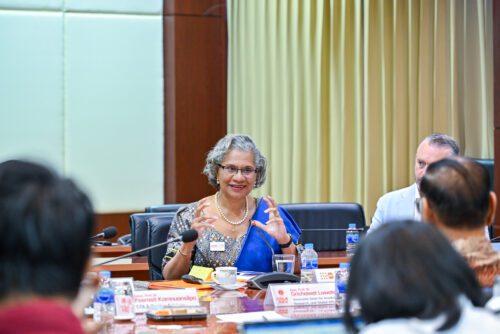
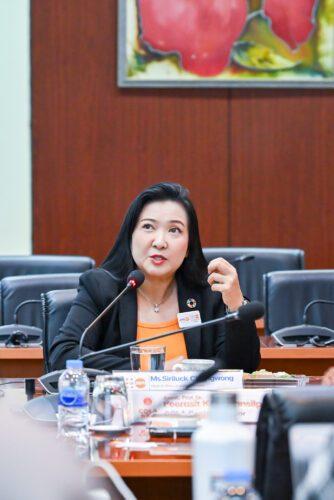
Mr. Smith introduced the mission of UNFPA as advancing sexual and reproductive health rights and addressing demographic changes and its socio-economic implications and the general demographic features and changes in the Asia and Pacific region, namely it have over half of 5 of the total global population of 8 billion with a number of countries with huge populations while it has smallest population countries with varying levels of socio-economic development. The region witnessed the significant maternal mortality since 2000 but since 2015 it has increasing maternal mortality rates and significant number of women experience physical or sexual violence. He also introduced the socio-economic implications of increasing aging in the region. In this he emphasized among others “working in partnership particularly with universities and students.” The regional presentation of demographic changes and their socio-economic implications were followed by a presentation of aging issues and policy implications in Malaysia and by Dr. Odnabanjo and in Thailand by Ms. Siriluck. They first presented the significant changes in population age structures in the two countries and discussed their health and socio-economic implications to their health aging or their healthy life expectancy. They highlighted the difference in the healthy aging between the two countries partly due to the different health and social protecting systems. “89.9 percent of Thai older persons are covered by social protection systems while Malaysia is still lacking clear mechanisms of comprehensive programs for elderly social protection.” There were a number of comments and questions from several faculty members and students from the floor which enriched the seminar.
